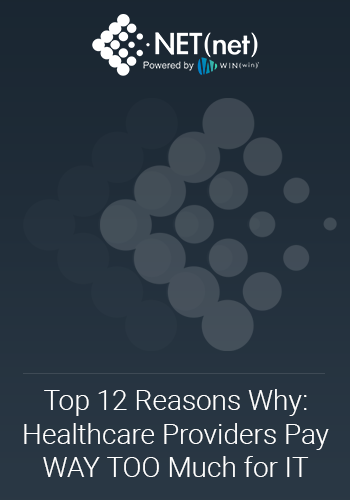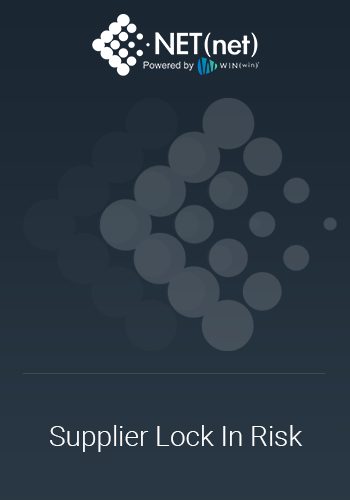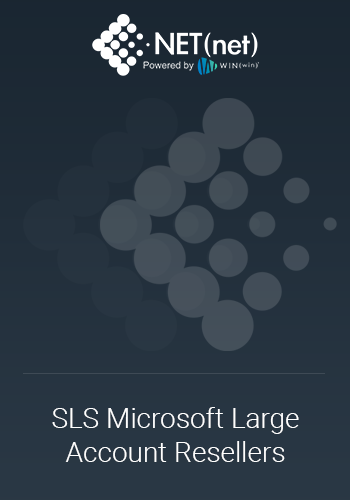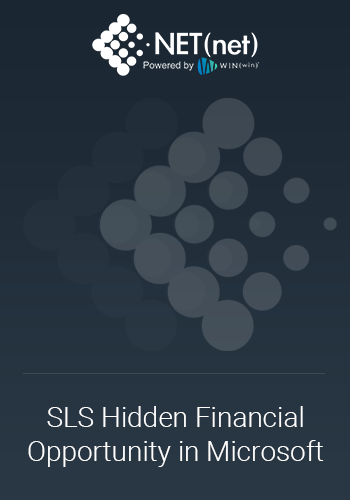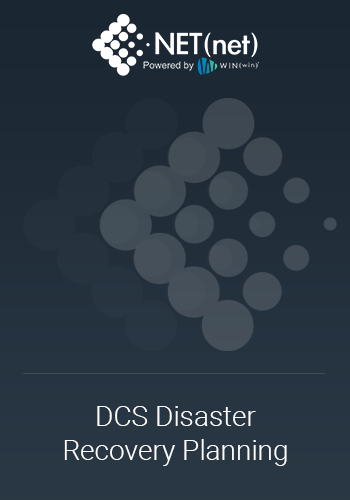Introduction
Our clients are digitally transforming and migrating workloads to the cloud, while simultaneously minimizing their dependency on IBM for legacy IT. Due to a variety of factors discussed in this article, Clients have developed a strong resistance to offering IBM a seat at the table in their digital transformation journeys, choosing instead to diminish IBM’s role in the Modern Enterprise to avoid putting their future at risk.
Contents:
- IBM Posts Another Dismal Quarter and Year
- 5 of IBM’s Top 6 Industries are in Open Disruption
- Clients have Accelerated Digital Transformation Initiatives
- Cloud as the Strategic Endpoint of the Modern Enterprise
- IBMs Role in the Modern Enterprise is on the Chopping Block
- IBM Claims to be Growing in Strategic Areas (AI & Cloud)
- It’s Now Easy to Migrate Workloads off the Mainframe
- Darker Days Ahead for IBM
- Request the Modern Enterprise Presentation Video
Preface
Modern Enterprises are mobile, virtualized, cloud enabled, and cost optimized. Our ME (Modern Enterprise) Savings Cloud Program (request the 8 minute presentation video: click here) helps you extract a minimum of $80 million of value over a 40-month term, ensuring you maximize savings during your cloud migration as a strategic endpoint for innovation and legacy workloads.
If you spend a minimum of $120 Million per year on IT, and have a heavy dependence on the IBM Mainframe, contact Us today to find out how NET(net) can help you save between 30%-65%.
For those with smaller IT spend, please see our Savings Cloud Calculator to see how much you can save, or continue reading below to ‘size the prize’ of opportunity to reduce costs in your enterprise.
IBM Posts Another Dismal Quarter and Year
The Big Blue IBM Ship is Still Sinking. Nearly a year ago, I wrote a blog about IBM called, “Shrinking Value, Shrinking Sales, Sinking Ship”.
In that article, I outlined how IBM has suffered greatly in the Ginni Rometty era from 8 years of:
- Consecutive revenue losses (make that 9 years now)
- $120 Billion of squandered market value (make that $134 Billion now)
- IBM Stock that was dead money (S&P 500 was up 160% during that time by comparison)
The article further illustrates how IBM released exactly NO new market leading products or services during that entire stretch, debunking AI (Watson), Blockchain, and its SoftLayer Cloud, while predicting that if IBM was going to turn things around, they would have to make the Red Hat acquisition work by becoming the clear industry leader for hybrid cloud management.
IBM’s Q4 and FY2020 results are in, and it is another bad quarter, leading another bad year. In a year where virtually every innovative technology company grew, IBM shrank, losing 6% of revenue, and dropping 56% of net income. IBM did its best to put a good spin on things:
New IBM CEO Arvind Krishna said, “We made progress in 2020 growing our hybrid cloud platform as the foundation for our clients’ digital transformations while dealing with the broader uncertainty of the macro environment. The actions we are taking to focus on hybrid cloud and AI will take hold, giving us confidence we can achieve revenue growth in 2021.”
Not exactly a Knute Rockne speech, but the 2020 results are pretty damning by any reasonable measure, so who can blame him?
5 of IBM’s Top 6 Industries are in Open Disruption
Given IBM’s performance, you may think the mainframe is dead. Although according to IBM, mainframes still dominate by handling 68% of the world’s production workloads, processing transactions worth over $3 Trillion daily.
IBM mainframes are still quite prevalent in these top 6 industries:
- Banking
- Retail
- Insurance
- Healthcare
- Government
- Travel and transportation
IBM says 96 of the world’s 100 largest banks, 90% of the largest insurance companies, 92% of the largest retailers in the United States, and 71% of the Fortune 500 all continue to depend on mainframes for their most business-critical processing.
According to NET(net) CEO Kellsey Le, “The mainframe is an important and often overlooked area. The vast majority of the world's financial institutions still use large mainframe systems, processing trillions of dollars' worth of transactions every day. But digital transformation is disrupting 5 of the 6 major industries where IBM mainframes dominate. In 2021, client boards are demanding that the mainframe no longer be considered an obstacle preventing clients from becoming Modern Enterprises. This gives our clients renewed energy to extract value from the mainframe to further fund their digital transformation initiatives. Savings generated by harvesting value from the mainframe environment is often a strong catalyst that propels our clients’ transformation efforts with greater velocity and wider applicability, accelerating the pace of change, and helping them reach their strategic endpoints quicker and more effectively. Modern Enterprises that run in the cloud are capturing market share and outpacing the R&D investments of their peers - making this a critical imperative for our clients in 2021.”
Clients have Accelerated Digital Transformation Initiatives
When looking towards the future, things could get even worse for IBM. As stated above, 5 of the 6 major industries are digitally transforming to Modern Enterprises. Roughly 80% of our clients in those industries realize that digital transformation requires a combination of the right culture, revised business processes, and new technology. However, only roughly 20% of them with mainframes rate their transformation strategies as being effective. Why is that? Especially when you consider that roughly 100% of our clients agree, that in 2021, the drive for digital transformation has intensified and become more essential for business success.
The most successful clients introduce transformation efforts not only designed to Modernize the Enterprise, capture organizational value, and/or save money, but also to change company culture to overcome stubborn problems of the past that have been quietly diluting enterprise value for years. We have a dozen primary strategies to help our clients with real-world transformation efforts designed to minimize cost and risk, and maximize the realization of value and benefit. Forward-thinking clients are embracing these ideas to accelerate their evolution into Modern Enterprises that are mobile, virtualized, cloud-enabled, and cost-optimized. In every case (we have seen), that is a future that minimizes (if not eliminates) IBM’s role.
So why are only 20% of our clients with mainframes rating their transformation strategies as being effective? Well, for starters, mainframes are extremely difficult (if not impossible) to escape. According to the Wall Street Journal, no major bank has ever replaced their mainframe.
According to Dave Young, SVP of Value Creation at NET(net), “Even if you could successfully replace your mainframe, the process could take years, if not decades to complete.”
Another problem expense and complexity of maintaining the mainframe environment. Most clients that want desperately to reduce costs have become frustrated at the non-linear relationship between cost and value, and lack the understanding necessary to know the relativity between the amount of change enacted and how to predict the resulting cost savings. This makes planning nearly impossible.
According to Mike Welsh, EVP of Value Creation at NET(net), “MLCs <monthly license charges> on a mainframe can constitute 50% of the overall cost and are based on consumption. These charges have been increasing exponentially for some clients as modern ‘prosumers’ use newer web and mobile applications that require more mainframe transactions on the backend but are generally not revenue-generating. So even though mainframe customers don’t get any additional business value from the resulting transactions, they still end up paying significantly more in MLCs, without many effective ways to control, avoid, or eliminate these charges. Clients on a journey to become a Modern Enterprises will need continual focus on mainframe cost optimization or changes in those workloads will not provide the anticipated benefits. A constant resynchronization of optimal settings is needed to minimize costs as every new change introduced into the environment brings with it new workload, performance, and capacity requirements. Nothing here is linear, which requires an extremely in depth understanding of which actions can be taken to achieve what results, and how can the commercial provisions be exploited to capture disproportionate value.”
Dave Young, SVP of Value Creation at NET(net) adds, “IBM customers suffer from trying to manage unpredictable workloads on the mainframe, particularly with the extreme market gyrations we have been experiencing as of late. IBM is simply not geared to provide a cost effective and flexible enough solution to meet fluctuating processing demands. Instead, their customers are left to fend for themselves, forced to purchase additional capacity that already exists in the hardware purchased (“machine days”), leaving their customers feeling gouged with unexpectedly high MLC costs. Our clients have had enough, searching for any reasonable way to extract themselves from this death spiral of already high and escalating, uncontrollable processing costs.”
The Cloud Has Emerged as the Strategic Endpoint of the Modern Enterprise
In 2020, macro-level market conditions forced clients to adapt and innovate to overcome the challenges of the physical world – and they did. We saw clients mobilize their workforces, virtualize their operating environments, and accelerate their digital transformation efforts. The result was a massive shift to the cloud. Cloud spending with AWS, Azure, and Google was up 35%-48%, and there are no signs of that trend slowing down any time soon, making cloud the strategic endpoint for the Modern Enterprise.
These cloud migration pressures are certainly hurting IBM. At a time when cloud companies grew massively and most technology companies grew considerably due to market pressures requiring the technology enablement of Work-From-Anywhere (WFA) workers, IBM somehow figured out how to shrink. Unfortunately for IBM, there may be more pain ahead. In 2021 one of our larger clients, with annual IT spends over $120M per year and a heavy reliance on the IBM mainframe are asking:
- Q: How can we make positive changes that will modernize the enterprise, improve company performance, simplify operations, and lower costs all at the same time?
- A: Our Modern Enterprise (ME) Savings Cloud Program.
IBMs Role in the Modern Enterprise is on the Chopping Block
IBM wants to play a critical role in the Modern Enterprise, and for sure they will – it is just not the role they want to play. Most of our Clients are looking strongly at ways to escape the tyranny of IBM and unlock their dependency on the mainframe and other proprietary platforms. In those cases, IBM is not viewed as a collaboration partner with the business in helping them to modernize, but rather as a captor, trying to convince them that if they try to escape, great harm will come to them and their business.
NET(net) SVP of Value Creation Dave Young says, “One of the many difficulties in complex, multi-dimensional negotiations with IBM, is that their dysfunction in account management is on full display. They are so siloed, it seems they are incapable of putting their customer needs at the forefront of their plans, instead appearing to be completely consumed with their own commercial interests in protecting various P&Ls. Clients have been asking IBM for the last 20 years to engage with “one face to the customer”, but IBM is either incapable or unwilling to do that, giving clients an almost visceral reaction when IBM all but demands to be part of the modernization effort with forced actions designed to block their customers from achieving the results they want, without carving off some future for IBM.”
At best, Clients see IBM as trying to force them to at least trade off partial value from critical mainframe investments so that IBM can ‘help them’ with initiatives in ‘growing’ areas such as AI, Quantum Computing, and/or Hybrid Cloud management, giving them a chance to earn their money back over time. These trade-offs enable IBM to show some ‘growth’ in these strategic areas, which lessens the sting of the resulting drop in Systems business, making IBM somewhat more pliable in a negotiation. We expect cybersecurity to be included in IBMs trade-off list in 2021, as IBM has received significant patents in this area, indicating they are seeing big technological impacts in the years ahead.
According to Darío Gil, Senior Vice President and Director of IBM Research, “The world needs scientific thinking and action more than ever. IBM’s sustained commitment to investing in research and development, both in good and in challenging times, has paved the way for new products and new frontiers of information technology that have greatly benefited our clients and society.”
IBM Claims to be Growing in Strategic Areas (AI & Cloud)
IBM claims to be ‘growing’ in AI and Cloud, but IBM was down YoY in every other category they measure. When it comes to Cloud & Cognitive, IBM often perpetrates a game with its customers where it will negotiate various concessions in hard fought areas such as Systems [where mainframes are categorized] which was down from $7.6B in 2019 to $6.9B in 2020, and exchanges big reductions for some ‘new purchases’ in cloud and/or cognitive. This is a classic technology supplier move not just limited to IBM, but certainly one they engage in frequently. So rather than true authentic field acceptance and take up of these solutions, this appears to be no more than a control measure for IBM to ease the damage by showing some growth to wall street investors in ‘strategic’ areas, while they suffer losses in legacy areas. Clients will often agree to placate IBM to get what they want.
Customers will generally buy a little bit of IBM cloud to get a lot of IBM systems cost reductions. Not to get too conspiratorial here, but IBM was down in Systems $626M YoY and was only ‘up’ in Cloud and Cognitive by $485M YoY. Exchanging $626M of annual cost in an area where clients are locked in for long term agreements, to trade off for $485M in new one-year spend is less overall in year 1, but it is what happens after that first year that is extremely troubling for IBM. Clients will often make this type of a trade because even though they can only show a small reduction in year 1, after that first year, they can discard that purchase and kill the ongoing expense, capturing the disproportionate reductions they originally sought; albeit one year delayed.
It would be nice to believe that some of the so-called growth in cloud was related to SoftLayer, but it is highly doubtful that is the case. IBM has a long history of:
- destroying the culture of every firm they have ever acquired
- starving it from the R&D investment it needs to continue to innovate
- siphoning off its operating margins to prop up other (failing) areas of the business, and
- grinding it into dust with layers of iron-fisted oversight, oppressive financial reporting requirements, and soul crushing employee performance reviews.
To peruse IBM’s acquisition history is to take a walk down memory lane, remembering some cool and innovative firms. Who has heard anything good about any of these companies after suffocating under IBM’s weight? Sterling Commerce anyone? Netezza? Kenexa?
IBM acquired SoftLayer in June of 2013 for $2 Billion, but at the time of the acquisition, SoftLayer was described as “the biggest privately held cloud infrastructure provider (IaaS) in the world”. It had a unique competitive differentiation in the market, which let customers pick dedicated and specialized hardware at an attractive price-point, something you could not do in AWS. The value proposition with SoftLayer was scale. You could get big bulky servers with tons of processing power, memory, and storage for a low cost in comparison to Amazon and Google, which had low caps on memory and did not have fast (local) storage. For a while, SoftLayer was attractive for particular use cases – so what happened? Well, Amazon and Google caught up and IBM focused on financial moves instead of better commercializing these offerings by listening to its customers.
Author, Public Speaker and Publisher Peter E. Greulich says, “At the start of the cloud movement, IBM invested an average of $9 Billion per year from 2005 through 2019 buying back its own stock, while its competitors responded to their customers’ needs.”
Both Amazon and Google evolved, and along with Azure, now dominate the public cloud market. IBM is no longer a serious public cloud option but is hoping to regain relevance with hybrid cloud management, and they will need to if they want to be a part of the Modern Enterprise.
It is possible that the growth in the cloud category is from a somewhat recently acquired Red Hat team that has not yet been poisoned to death by IBM’s culture. IBM is taking liberties though, even here.
NET(net) EVP of Value Creation, Mike Welsh says, “IBM’s pricing for Cloud Paks is anchored in legacy pricing models that make it extremely expensive compared to market alternatives. IBM has shown some early ’success‘ in cloud ’growth‘ but, may be inadvertently inflating their numbers by how they are counting install base revenue as cloud revenue, which means their numbers may not accurately reflect true market acceptance of their cloud solutions."
In 2020, Red Hat was "up" 18% YoY and is perhaps the one bright spot, as clients are highly receptive to hybrid cloud management, but customers are still unsure how or even if, IBM can help.
Peter E. Greulich, who is also the CEO of MBI Concepts Corporation goes on to say, “If IBM can’t explain its cloud value proposition in the time it takes to ride the elevator up to your office, then ask them to take the next elevator down.”
And that may be good advice, as it remains unclear how IBM is uniquely capable or positioned to become the arbitrator of hybrid cloud management. Further, even if it is both capable and well positioned, how it will defeat recognized market leaders such as VMware and Nutanix among others.
Migrating Workloads off the Mainframe has become easier than ever.
IBM’s stranglehold on large scale transaction processing may be in jeopardy as cloud migrations of mainframe workloads are now easier than ever.
NET(net) SVP of Value Creation Philippe Anav says, “The shift toward hybrid infrastructure opens up new opportunities to incorporate the mainframe as part of your cloud migration strategy, further utilizing mainframe applications in modern processing environments as their workloads migrate to the cloud, hence extending the life, utilization, and value of the investment, while improving accessibility, gaining flexibility, and experiencing significant cost savings.”
Most clients do not realize that migrating mainframe batch workloads requires no refactoring. Clients can “lift and shift” COBOL batch processing workloads (along with the JCL) and move them to (for example) an EC2 instance on AWS. This process is easy and can be done with low risk.
Clients can also migrate OLTP environments (such as CICS) to the cloud, and while they can scale those instances vertically, they can also direct the user interface to an elastic load balancer with multiple EC2 instances to offer a performance-centric solution that minimizes the risk of any processing bottlenecks. Depending on the nature of transaction volumes and peak loads, clients not only see significant cost savings, but they can also see improved performance and throughput. This methodology also enables clients to easily eliminate those additional instances when not needed during off peak processing times, saving them huge money in the process.
In addition to COBOL and CICS, relational databases such as DB2 also port nicely to RDS - and even hierarchical databases such as IMS/DB can be normalized (with some minor code changes). Even the security protocols of RACF have simple migrations to tools as commonplace as Active Directory.
NET(net) SVP of Value Creation for EMEA Fred Teekens says, “While most clients think they are stuck with their legacy mainframe, 2021 is the year for modernization of their enterprise. There are several opportunities to be investigated to optimize and rationalize and even migrate off the mainframe, so clients should reach out to see how we can help."
NET(net) SVP of Value Creation Dave Young says, “The answer is to transform your mainframe from an obstacle to an enabler of innovation.”
The technology is here and is ready for prime time. Clients are successfully overcoming these challenges and Modernizing their Enterprises at record speeds and with record efficiency. Those that do not act now are being left behind. If you would like to capture a minimum of $80 Million of value, please talk to us. We can help you get the value you deserve from your digital transformation efforts.
Darker Days Ahead for IBM
Summary
- None of our non-IBM clients are asking us for help to construct net new, interesting, innovative deals with IBM in any of their so-called high growth areas.
- Currently every IBM customer we are working with wants to lower costs on IBM and minimize if not eliminate IBM from their digital transformation initiatives and/or cloud migration plans.
- IBM says it does 5 things very well, but instead of clients flocking to buy their solutions for
- AI
- Cloud
- Quantum
- Blockchain
- Cybersecurity
We are seeing clients instead look for ways to migrate workloads off the mainframe and other legacy platforms, and minimize their dependency on IBM in the future. Any deals we see IBM doing in these areas of supposed growth markets for them usually involve clients agreeing to trade off some value in these growth areas for greater reductions in legacy areas to get IBM to play ball, with the mindset that they will abandon those investments as soon as possible.
Unfortunately for IBM, its customers, and the markets at large, it does appear there will be darker days ahead for IBM if they are not able to successfully buck these trends.
- IBM has seemingly lost:
- Its dominance in wallet and mindshare with the C-suite of the Modern Enterprise
- Its relevance with its inability to deliver any market leading products
- Its credibility by selling futures and nonsense for years
- Its reputation by its tyrannical account management
- Its mojo by allowing finance people to ruin it
- Its soul by firing many of its greatest people (and by keeping many of its worst)
SO, THEN WHAT!?
So as my son likes to say, "so, then what!?’" Similarly, you might be asking, what do I do now that I know all this? Well, if you recognize your situation in the information you have just read, you are not alone. Many of our clients have suffered with similar pain.
You probably have consultants telling you all the remarkable things they can do for you, but you might not know what is real, and/or where to start. Unlike the others, we are not here to sell you a solution nor to charge you big consulting fees.
In fact, our model works the opposite way. We are here to help you navigate this challenge and show you what you can do quickly and easily to capture the most value for the lowest cost. For more information, or to speak with us further about your specific situation, please Contact Us today.
About NET(net)
Founded in 2002, NET(net) is the world’s leading IT Investment Optimization firm, helping clients find, get and keep more economic and strategic value. With over 2,500 clients around the world in nearly all industries and geographies, and with the experience of over 25,000 field engagements with over 250 technology suppliers in XaaS, Cloud, Hardware, Software, Services, Healthcare, Outsourcing, Infrastructure, Telecommunications, and other areas of IT spend, resulting in incremental client captured value in excess of $250 billion since 2002. NET(net) has the expertise you need, the experience you want, and the performance you demand. Contact us today at info@netnetweb.com, visit us online at www.netnetweb.com, or call us at +1-866-2-NET-net to see if we can help you capture more value in your IT investments, agreements, and relationships.
NET(net)’s Website/Blogs/Articles and other content is subject to NET(net)’s legal terms offered for general information purposes only, and while NET(net) may offer views and opinions regarding the subject matter, such views and opinions are not intended to malign or disparage any other company or other individual or group.

